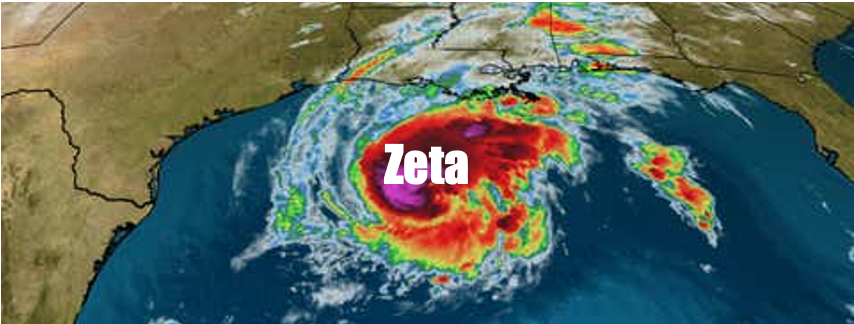Thinking Through a Business Interruption Loss
Jeff Esper
Think Backwards, Sideways and Forward
Business Interruption coverage is intended to reimburse the policyholder for the income lost or incremental increase of expenses experienced during the loss period. Though the application of this coverage seems straightforward on the surface, making a claim for business interruption is far from simple. In this article, we’ll walk you through what is covered under business interruption and how to think through a BI claim.
Let’s start with how coverage applies by reviewing what is and is not covered:
- Insured for the Actual Loss Sustained, or the overall permanent economic loss to the company;
- Not insured for temporary delays in shipping product to customers;
- If a manufacturing business is operating at capacity, maintains normal levels of inventory, and has no ability to make up lost production, an actual loss is highly likely;
- Insured for the time required to repair or replace damaged property, so long as repairs are conducted in a commercially responsible manner;
- Also insured for any expenses incurred to reduce the business interruption loss, so long as the expenses do not exceed the amount of loss they prevent;
- Potentially insured for consequential sales losses and market share losses for a period following the resumption of normal operations;
- If another business group under this policy is dependent upon your business as a supplier or customer, that potential loss should become part of your exposure scenario.
- Extra expenses incurred to operate as normally as possible during the period of restoration of damaged property are also covered.
In identifying all potential exposures it is common to encounter the uncommon. Repairs to damaged property, production losses, and major extra expenses are obvious to everyone. It is the less-obvious exposures, usually with respect to business interruption, that must be identified to achieve maximum recovery.
Think Backward
- How are supply functions affected by the loss? Will take-or-pay contracts expire? Will we lose volume discounts? Will other divisions be forced to take downtime because of our loss?
Think Sideways
- Are some of our customers now being served by other insured locations at excess production cost or freight penalties? Have engineers helping in our repair effort been forced to delay other projects that are expected to result in significant savings of operating costs?
Think Forward
- Are we losing profit at downstream converting locations that we can no longer supply? Have we lost our position as sole or primary supplier to a key customer? Were productivity improvements delayed?
Not every area of potential loss will be covered by insurance, but it is best to identify all known effects as soon as possible and sort out policy responses later. Unusual loss exposures may require unusual documentation. The more remote the problem the more difficult the reconstruction of events at a later date.
It is essential that all potential exposures be identified as soon as possible after the loss. Initial loss estimates established by the adjuster are of great importance, and every effort should be made to assist the adjuster in preparing an accurate, sustainable estimate.
When property damage is the trigger, a file should be maintained listing each major category of damage and a corresponding estimate of the loss. As new exposures are identified, and as better estimates become available, the list can be updated. The purpose is to facilitate response to the inevitable requests for information on the status of repairs, production, and excess costs.
Insights Worth Sharing

Making a business interruption claim is more than just an accounting exercise. It requires a good strategy, a thoughtful process and perhaps most of all, patience. These lessons come from experience and the team at RWH Myers has earned it from decades of preparing BI claims. Though this topic is of the philosophical nature, it is just as important as the details behind a business interruption calculation. So let’s dive in and see what you really need to make a BI claim. Strategy Every loss is different. You can’t apply the same game plan and the same approach to every claim. You have to assess the situation and all its parts to devise a specific workable strategy. Experience will help ensure your strategy is appropriate for the situation, but the claim will take on a life of its own. The initial loss assessment is derived from the loss information such as what happened, the timeline of events, the impact to operations and how long it will take to get back to normal. As forensic accountants, we will look at the entirety of the situation and dissect it from every angle to figure out the full scope of loss and then determine the best approach to measuring and supporting the claim. We will also anticipate how the claim will be adjusted and plan for arguments against the claim. Taking the time to develop a proper strategy will pay off at every stage of the claim process. Process Once you understand the situation and have designed an effective strategy, you can lay out a process to get to the desired result. The process starts off with identifying and assembling the team to execute the plan. The claim will require data from various sources and input from key internal experts to provide insights as to the impact on operations, both upstream and downstream. The process also includes managing claim adjustment, from setting the timeline to handling requests for information. During the process, your claim preparer will work to keep all phases of the claim moving forward whether with data gathering or insurer feedback. Claims tend to start out with a high level of attention, but it is common to lose momentum. Simply put, a well-defined process will keep the claim moving, limiting distractions and roadblocks. Patience Patience doesn’t equate to conceding to a lengthy and arduous process. It’s just the opposite. By definition, it means, “quietly and steadily persevering or being diligent, especially in detail or exactness.” It is important to understand that certain parts of the claim take time to develop, and that time is critical to ensuring a thorough and well thought out claim presentation. For example, taking your time in the beginning of the process to lay out the foundational elements of the claim will avoid obstacles that may delay claim settlement and the amount recovered. It’s best to set expectations early and commit to the process. Again, practicing patience will expedite the claim process and improve the outcome. You can rely on the experience of your forensic accounting team to lead that effort. So, you see, it’s not all about the numbers. There is more to the intangibles than you may have thought. Every claim has its own unique challenges. You should be prepared for anything and everything. Again, preparing a claim is just as much strategy, process, and patience as it is the technical elements of claim preparation.

Property damage insurance claims are among the most infrequent for corporate policyholders, but this year Louisiana has suffered through a record number of Hurricanes. When catastrophe strikes, recovering insured losses essential to rebuild and resume operations. Effected policyholders will need expert help to evaluate, organize and document their claim to present to insurers. Forensic accountants that devote their practice to preparing claims for policyholders have every day experience just as adjusters and auditors do, so it is certainly to your advantage to hire a firm of experts to represent your interests throughout the property damage and time element claim process. Though the specific insurance claims and the policyholders may change, the vital steps to recovery remain the same. One thing both sides agree on is that the claim process goes smoother when the policyholder is well prepared for demands of a claim from start to finish. The partners at RWH Myers prepared a detailed guide to assist policyholders in preparation for claim recovery. It is designed to serve as a resource and a framework for the claim process and includes the following sections: Establish Appropriate Accounting Methodology: Provides guidance and an organizational framework for post-loss activities, establishing specific accounts to capture the loss. Property Damage Expense Categories: Explains the types of expenses that may be included in each category of coverage and the documentation required for these costs. Claim Preparation Objectives and Overview: Identifies objectives for the claim preparation process, and provides a conceptual framework for achieving them. What is Covered: Examines the direct and indirect exposures to loss that are typically encountered, and provides guidelines for determining whether specific types of property damage losses are covered under the policy. Claim Preparation Procedures: Suggests timetables for the submission of inventory, property damage, and discusses the format and content of standard claim submissions. Audit and Settlement Guidelines: Discusses the procedures undertaken by the insurers adjusters and experts, and provides an overview of the settlement process. Click here to download the full guide.



